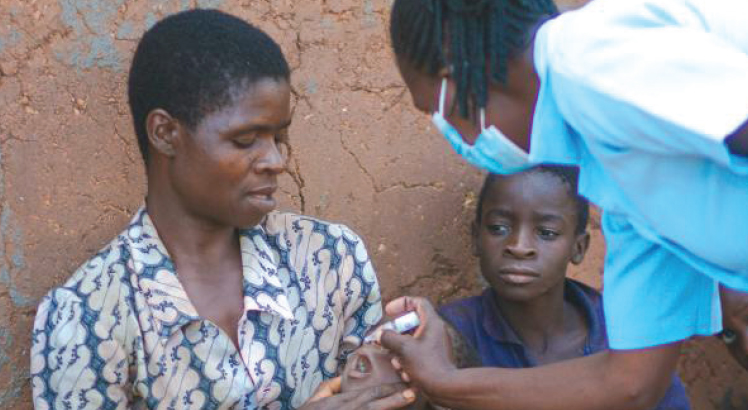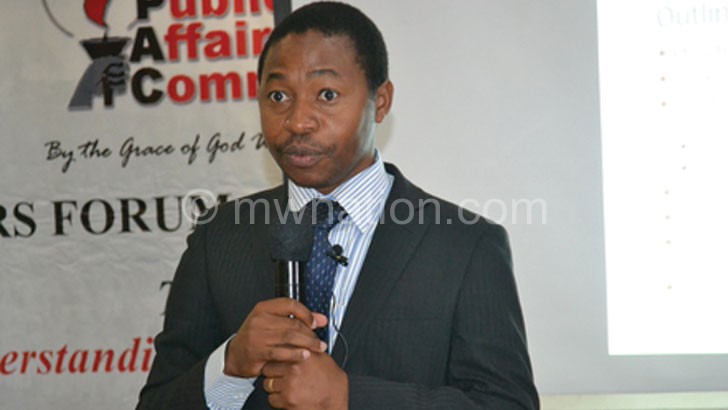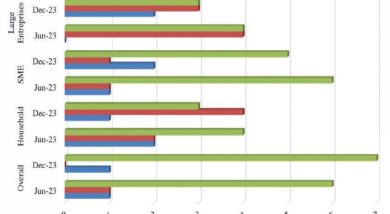HSAs are backbone of polio fight
Misozi Bisayi, 39, feels lucky that her last-born son, Joseph, retook polio vaccine at home two months after Malawi confirmed the first case in three decades.
On March 28, the country launched a nationwide campaign to vaccinate 2.9 million children aged under five to end the crippling disease last detected in 1992.
“For days, a community volunteer has been telling us that a child in Lilongwe was recently found with polio, the first of its kind in many years. This means no child will be safe unless every child is vaccinated,” says Bisayi after her son, four, received vaccine drops around 5.30 pm.
The boy was the last child to be vaccinated on the sunny Wednesday by a door-to-door team led by Alice Kalima, senior health surveillance assistant (HSA) at Kangolwa Health Centre in Ntchisi.
“This is the first time health workers have come home to vaccinate a child and it left me with no excuse for my son to miss his shot. I am happy that my son is protected and I didn’t waste time or money,” says Bisayi.

Once a month, she leaves home around 7am and makes a 90-minute trip to Chimbindu Village where children receive routine vaccination. She often returns home after noon, sacrificing about five hours just to protect the child from vaccine-preventable diseases.
“With the door-to-door campaigns, I can use the time saved to take care of my family, crops and grocery shop that makes K5 000 a day,” Bisayi explains.
This tale is common in rural areas where 84 percent of Malawians live and health facilities are far apart.
To deliver vaccines to children in their homes HSA Kalima had to walk over hills and valleys dotted with scattered settlements.
Her sweat and panting said it all.
“Joseph is the 91st child we have vaccinated since morning. All day, we have surmounted tricky footpaths, deep gullies, snaking streams and overgrown valleys as homes are not only far apart, but also connected by rocky, bumpy and narrow footpaths,” she narrates.
Overcoming the barriers makes the first phase of the polio vaccination campaign one of the chilling, but exciting challenges in the HSA’s seven-year career.
“Since I chose this calling, I have to go where my services are needed most because far-flung populations will suffer exclusion and die from preventable conditions such as polio if I shun them.”
Kalima’s team vaccinated 94 children the day the vaccination campaign kicked off, 62 on day two and 91 on the third day.
The team leader had to wake up as early as 6 am, making the one-hour-a-half trip from her home in Chimbindu Village. A return trip on a motorbike costs K1 400, the cost the locals pay to present their children for routine immunisation there.
“It is amazing that we can vaccinate 91 children in their homes. We usually get about 40 during monthly clinics in Chimbindu. This confirms that long walks and high travel costs prevent some children from accessing vaccines,” she says, safely tucking the remaining vaccine doses between cool packs in a blue box.
The cool boxes keep the perishable vaccines chilled and effective for six to eight hours lest they perish if exposed to high temperatures.
“No dose must go to waste before reaching a child at risk of polio,” says Kalima, who supervises 14 other HSAs at the rural health centre located 46 kilometres east of Ntchisi town
Malawi is part of a regional push to kick out polio by vaccinating 9.4 million children in eastern and southern Africa. Similar campaigns are also underway in Zambia, Mozambique and Tanzania.
Unicef is working with governments in the four countries to eradicate a potential resurgence of the disease transmitted when one ingests water or food contaminated by faeces from an infected person.
In Malawi, the UN children’s agency procured and distributed 6.8 million polio vaccine doses to all 865 health facilities nationwide.
Before the arrival of the vaccines from the Global Polio Eradication Initiative, Unicef installed 170 new vaccine refrigerators, repaired 135 faulty ones and distributed cold boxes as well as remote temperature monitoring devices.
“Before the campaign, we had 10 vaccine carriers for 16 HSAs, which were not enough, considering that the polio vaccination campaign is running parallel to routine immunisation and Covid jabs. We thank Unicef and the Expanded Programme on Immunisation for giving us more vaccine carriers which helped us reach more people during the door-to-door campaign,” Kalima explains.
According to Unicef vaccine management specialist Lokesh Sharma, the shortage of vaccine carriers in the district gives a glimpse of a familiar challenge observed during cold chain assessments in readiness for the campaign.
He salutes community health workers for keeping the boots firmly on the ground and hitting the road running to deliver the vaccine to children most at risk even in remote areas.
Sharma explains: “HSAs are the backbone of this immunisation programme. Whatever we are doing is high-level coordination, but the ultimate delivery of services is done by the selfless health workers, who are doing an excellent job despite being overburdened by routine immunisation and Covid-19 vaccination campaigns.
“We are very grateful for their dedication because the huge investment in vaccine logistics means nothing if doses do not reach a child at risk of polio.”





